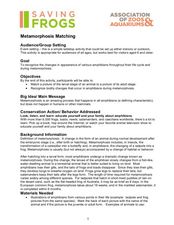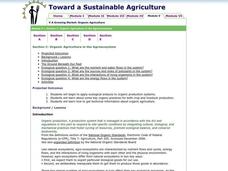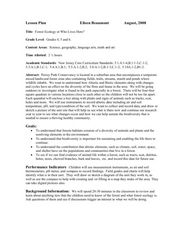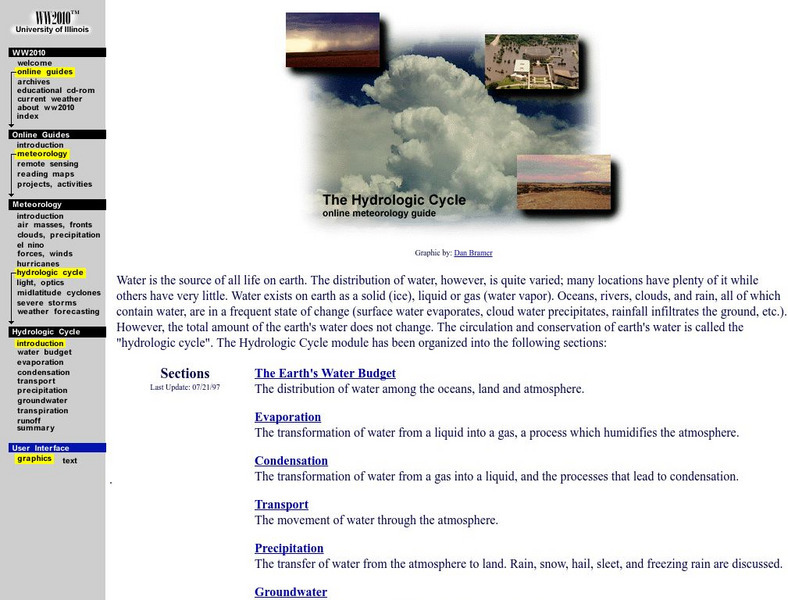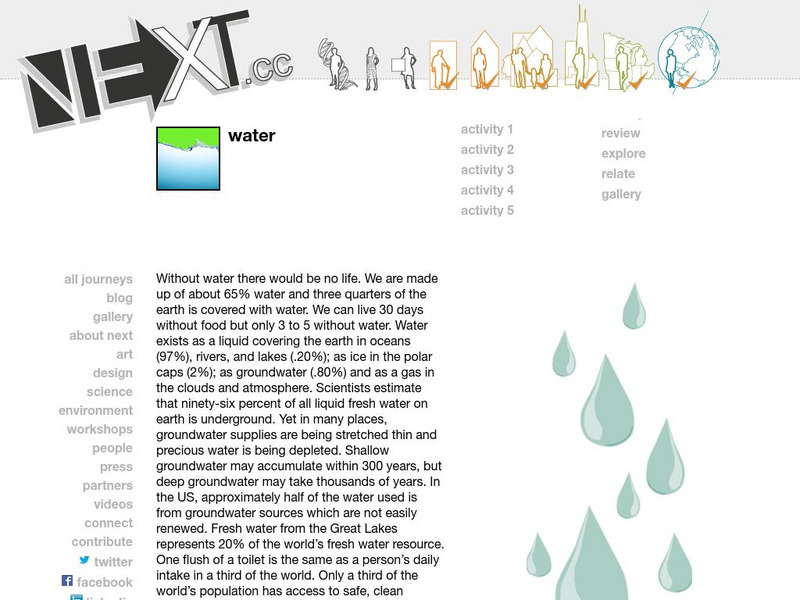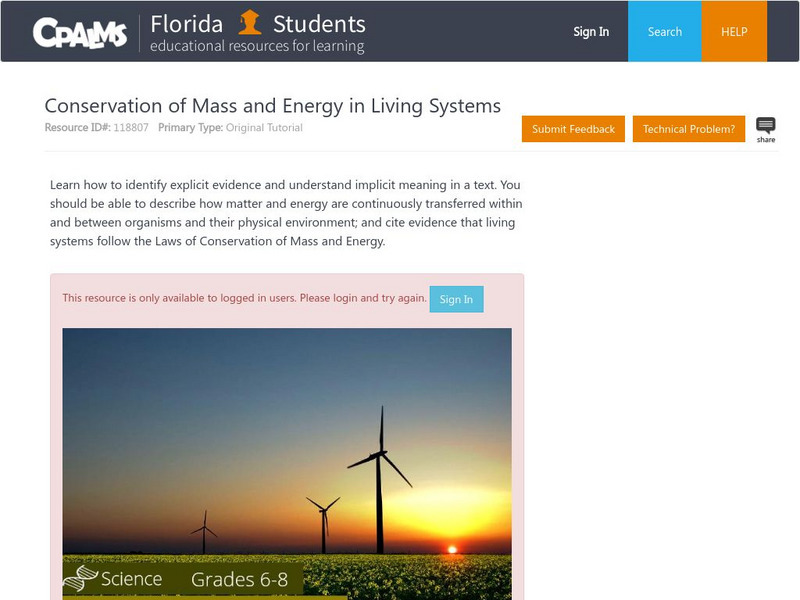Curated OER
Cycling Energy
Fourth graders are introduced to how electricity is produced. In groups, they compare and contrast the linear production of energy with other forms of mechanical energy production. They try to make a turbine work acting like it is part...
Curated OER
Everyday vs. Extreme Relationships with Nature
Young scholars examine the interactions with nature and the environment. They discover where water comes from and ways to conserve water. They also examine energy sources and consumption.
Curated OER
Endangered Species- Florida Panther
Students investigate the concept of the conservation of the Florida Panther and examine the effects of the Everglades water restoration project. They conduct a web based activity that includes the following: Listing what they know,...
Curated OER
Metamorphosis Matching
Pupils view pictures of animals as they complete the metamorphosis from a larva to an adult. In this metamorphosis lesson plan, students view pictures and in the end are able to match pictures of a larva stage to an adult stage in...
Teach Engineering
Designing a Winning Guest Village in the Saguaro National Park
Don't desert a resource on the desert! Scholars work in groups to build on their ideas from the previous lesson to design a sustainable guest village in the Saguaro National Park. Each group produces a PowerPoint presentation to share...
Serendip
How Do Muscles Get the Energy They Need for Athletic Activity?
Every muscle movement requires energy, but where does that energy come from? Scholars answer this question and more as they complete a worksheet. By following the directions, completing research, and discussing it as a class, they begin...
Curated OER
Prairie Scales and Prairie Smoothies
Sixth graders explore the animals that live on the prairie and identify differences between amphibians and reptiles and the adaptations each have made to live on the prairie.
Curated OER
Soil Investigations
Middle schoolers examine the basics about soil. In this soil lesson students describe the physical properties of soil and explain what soil profile is.
Curated OER
Toward a Sustainable Agriculture
Learners analyze organic production systems. In this organic agriculture lesson, students examine key organic practices for both crop and livestock. This lesson includes 5 different activities, 4 critical thinking questions and...
Curated OER
Popular Paper
Students explore the benefits of recycling paper. In this recycling lesson plan, students use statistics to calculate the amount of paper that is thrown away each week and construct a graph. Students analyze the data and calculate the...
Curated OER
Zoo Poo
Students use Internet research to determine the amount of carbon dioxide produced per unit energy for biomass and coal. In this alternative energy lesson, students research to find out how much energy and carbon dioxide several coal and...
Curated OER
Macroinvertebrate Sampling
Students identify macroinvertebrate species to investigate ecological systems and the relationship between humans and the environment.
Curated OER
Meteorological Predictions
Pupils make a link between prediction and hypothesis in math and science. Based on data collected over one week, students evaluate the predictions of local weather forecasters, compare the predicted outcomes to the actual weather...
Curated OER
Materials: Hidden Costs, Mapping the Source and Cost of Raw Materials.
Students map connections among raw materials. In this environmental stewardship lesson, students design strategies to minimize the use of raw materials and discuss how to use more sustainable materials.
Curated OER
Forest Ecology or Who Lives Here?
Students explore a hardwood forest. In this forest ecology lesson, students examine the diversity and animals and plants as they explore their habitats at Poricy Park Conservatory. Students determine how biodiversity and abiotic elements...
Curated OER
Make Way for Wild Migrants
Students discuss the threats facing migratory species and track the seasonal journeys of wildlife in real space and in cyberspace. Once they have gathered information from several sources, they create a portfolio to share with others...
TeachEngineering
Teach Engineering: Human Water Cycle
Students learn about the human water cycle, or how humans impact the water cycle by settling down in civilizations. Specifically, they learn how people obtain, use and dispose of water. Students also learn about shortages of treated,...
Other
Managing Wholes: Water Cycle Basics
A great slideshow that compares an effective water cycle with an ineffective one. Content can be read in five different languages.
Inland Fisheries Ireland
Something Fishy: Water, Water, Everywhere
Colorful and informative site provides users with a comprehensive lesson on water. Discuss the forms of water, the water cycle, water conservation and more.
University of Illinois
University of Illinois Urbana Champaign: The Hydrologic Cycle
Water is the source of life on earth. It exists in many forms and is constantly changing. The circulation and conservation of earth's water is called the hydrologic (or water) cycle. Find out how water evaporates, condensates,...
Next.cc
Next: Water
Multiple activities help students gain a better understanding of the importance of water conservation. Click on the links provides for further exploration.
Other
Virtual Field Trip: Water/aquifers
This virtual field trip for middle school students looks at aquifers and their place in the hydrologic cycle. Students learn why and how it is important to protect the source of your drinking water and some unique details about the...
CPALMS
Florida State University Cpalms: Florida Students: Conservation of Mass and Energy in Living Systems
Learn about the conservation of mass and energy as it applies to different living systems.
University of Illinois
University of Illinois Extension: Schools Online:knowing Your World: Water Rich Water Poor
"Water Rich Water Poor" emphasizes the importance of water conservation and provides suggestions for conserving water.



